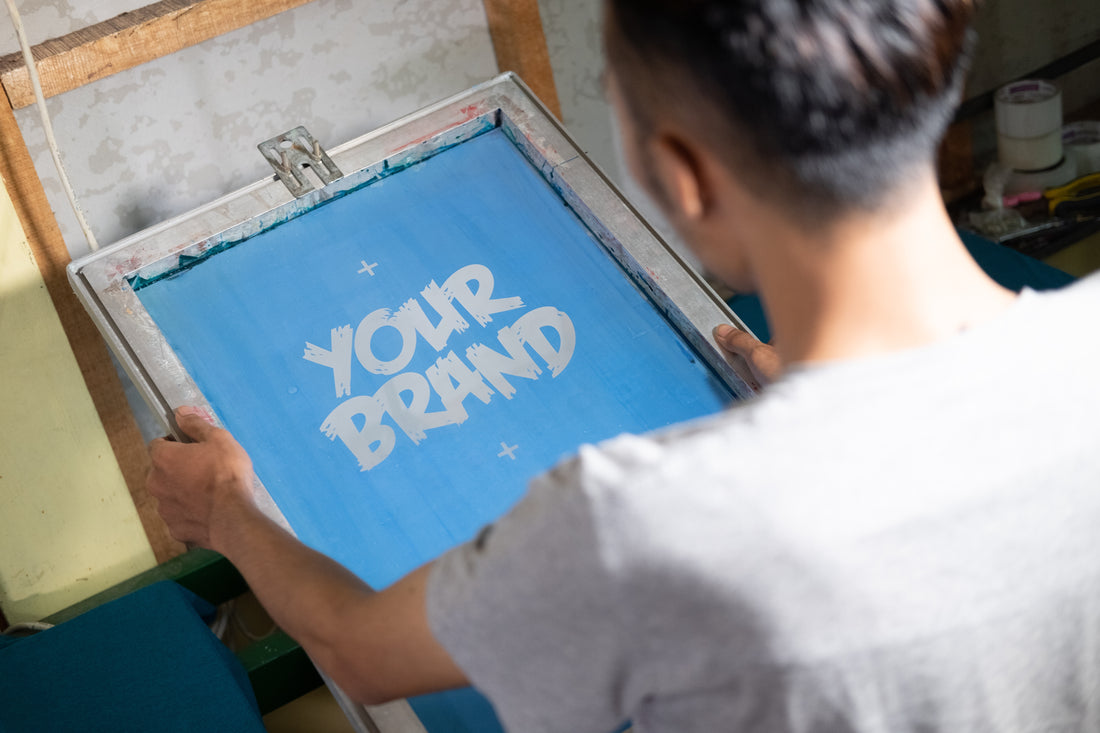
The Ultimate Guide to Choosing the Right Emulsion for Screen Printing:
Share
A Comparison of Diazo, Diazo Dual Cure, SBQ, and SBQ Dual Cure Emulsions
When it comes to screen printing, the right emulsion can make all the difference in the quality and durability of your prints. With so many options on the market, it can be overwhelming to choose the right one for your project. That's why we've put together this comprehensive guide to help you understand the differences between four of the most popular emulsions on the market: diazo, diazo dual cure, SBQ, and SBQ dual cure. Whether you're a seasoned screen printer or just starting out, this guide will help you make an informed decision and achieve the best results for your prints.
What are Emulsions in Screen Printing?
Before we dive into the different types of emulsions, let's first define what emulsions are in screen printing. Emulsions are light-sensitive coatings that are applied to a screen in order to create stencils for printing. When the emulsion is exposed to light, it hardens and creates a stencil that can be used for printing. Emulsions come in various forms, including diazo, diazo dual cure, SBQ, and SBQ dual cure.Understanding Diazo Emulsions
Diazo emulsions are a popular choice for screen printers due to their affordability and versatility. These emulsions are typically a two-part system that requires mixing a diazo sensitizer with the emulsion base. Once mixed, the emulsion has a shelf life of 4-6 weeks.How Diazo Emulsions Work
When diazo emulsion is exposed to light, the diazo sensitizer undergoes a chemical reaction that hardens the emulsion. The areas of the screen that were covered during the exposure process remain soft and can be washed out to create a stencil.Pros and Cons of Diazo Emulsions
Pros:- Affordable
- Versatile
- Good for simple designs and one-time use
- Can be used with both water-based and solvent-based inks
- Short shelf life
- Not as durable as other emulsions
- Can be difficult to wash out in high humidity or low temperatures
Understanding Diazo Dual Cure Emulsion for Screen Printing
Diazo dual cure emulsions are similar to diazo emulsions, but they also contain a second chemical that helps to further harden the emulsion after exposure. This makes diazo dual cure emulsions more durable than traditional diazo emulsions.How Diazo Dual Cure Emulsions Work
When diazo dual cure emulsion is exposed to light, the diazo sensitizer undergoes a chemical reaction, hardening the emulsion. The second chemical in the emulsion then reacts with the diazo sensitizer to further harden the emulsion.Pros and Cons of Diazo Dual Cure Emulsions
Pros:- More durable than traditional diazo emulsions
- Can be used for more complex designs and multiple print runs
- Good for water-based and solvent-based inks
- Longer shelf life than traditional diazo emulsions
- Can be more expensive than traditional diazo emulsions
- Mixing process can be more complicated
- May require additional steps in the exposure process
Understanding SBQ Emulsions
SBQ emulsions are a popular choice for screen printers due to their ease of use and versatility. Unlike diazo emulsions, SBQ emulsions are typically a one-part system that doesn't require mixing.How SBQ Emulsions Work
When SBQ emulsion is exposed to light, it cross-links and hardens. The areas of the screen that were covered during the exposure process remain soft and can be washed out to create a stencil.Pros and Cons of SBQ Emulsions
Pros:- Easy to use
- Versatile
- Can be used with both water-based and solvent-based inks
- Longer shelf life than traditional diazo emulsions
- Not as durable as diazo dual cure emulsions
- May not be suitable for very fine detail or intricate designs
Understanding SBQ Dual Cure Emulsion for Screen Printing
SBQ dual cure emulsions are similar to SBQ emulsions, but also contain a second chemical that helps to further harden the emulsion after exposure. This makes SBQ dual cure emulsions more durable than traditional SBQ emulsions.How SBQ Dual Cure Emulsions Work
When SBQ dual cure emulsion is exposed to light, it cross-links and hardens. The second chemical in the emulsion then reacts with the hardened emulsion to further harden it.Pros and Cons of SBQ Dual Cure Emulsions
Pros:- More durable than traditional SBQ emulsions
- Can be used for more complex designs and multiple print runs
- Good for water-based and solvent-based inks
- Longer shelf life than traditional SBQ emulsions
- Can be more expensive than traditional SBQ emulsions
- Mixing process can be more complicated
- May require additional steps in the exposure process
Conclusion
Choosing the right emulsion for your screen printing project is crucial to achieving the best results. Consider factors such as image detail, ink type, light source, and environmental factors when selecting an emulsion. Apply emulsion to screens carefully and handle it with care to ensure the best results. Properly caring for emulsion-coated screens can also help extend their life and ensure the best results for future prints. Ulano Emulsion ChartFAQs
- How do I know if I need a diazo or photopolymer emulsion?
- Consider the level of detail in your design. If your design requires fine lines, small text, or intricate details, then a diazo emulsion would be the best choice. If your design has larger areas of solid color or bold text, then a photopolymer emulsion would be a better option.
- Can I use any type of ink with any type of emulsion?
- No, different types of inks require different types of emulsions. Solvent-based inks require a more durable emulsion that can withstand harsh chemicals, while water-based inks require a more water-resistant emulsion. Dual cure emulsions are suitable for both types of ink.
- How do I apply emulsion to a screen?
- Clean the screen with a degreaser, mix the emulsion according to the manufacturer's instructions, apply a thin layer of emulsion to the screen using a scoop coater, let the emulsion dry in a light-safe area, place the film positive or negative onto the emulsion-coated screen and secure it in place, expose the screen to light, following the manufacturer's instructions, and wash the screen with water to remove unexposed emulsion, leaving a stencil for printing.
- How should I store emulsion?
- Store emulsion in a cool, dry place away from direct sunlight.
- How do I care for emulsion-coated screens?
- Store screens in a dry, cool area away from direct sunlight, clean screens with water and a soft brush after each use to remove any ink or residue, use a degreaser to remove any stubborn ink or residue, avoid using harsh chemicals that can damage the emulsion, and reclaim screens once the emulsion begins to break down to ensure the best results for future prints.
